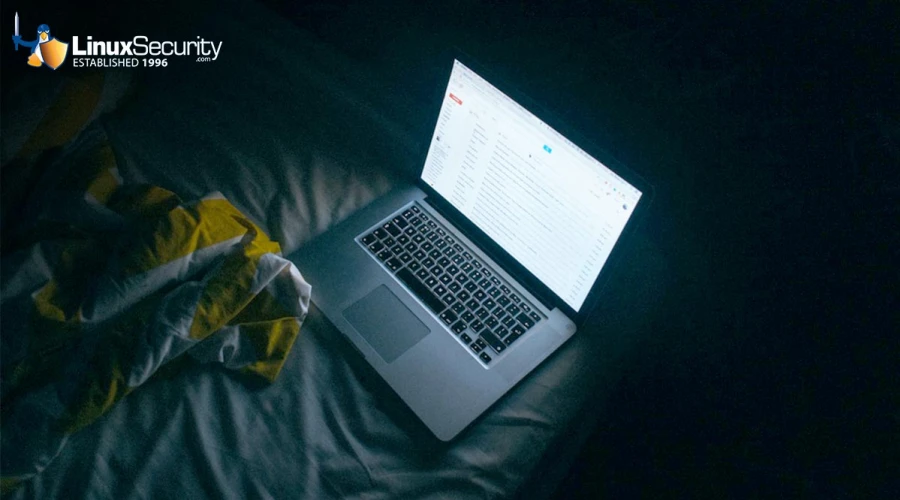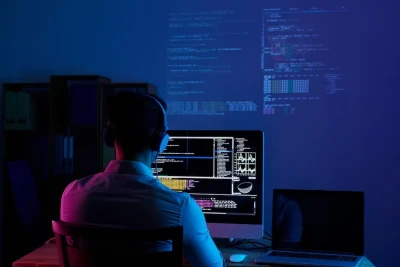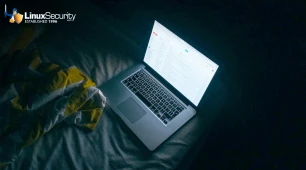
As the end of support for Windows 10 in October 2025 nears, Windows 10 users are facing a crucial crossroads. Without free security updates, numerous devices could become vulnerable to new threats. ESET, one of the leading cybersecurity firms, is sounding an alarm by encouraging people not only to upgrade to Windows 11 but to seriously consider other operating systems, such as Linux, as an alternative platform.
This provides us Linux users an ideal opportunity to advocate for our much-loved OS. Here's what you need to know about the upcoming end of Windows 10 support and the benefits of switching to Linux over upgrading to Windows 11.
The Looming Risks of Staying on Windows 10
 Windows Operating System Usage Worldwide (Source: StatCounter)Staying on Windows 10 post-2025 presents many risks, primarily security updates. Without these critical patches, any vulnerabilities discovered post-2025 support cutoff will remain unrecognized by Microsoft, creating opportunities for cybercriminals. While Microsoft does offer Extended Security Updates (ESU) at a hefty fee, this solution may not suit businesses looking to manage large fleets cost-effectively.
Windows Operating System Usage Worldwide (Source: StatCounter)Staying on Windows 10 post-2025 presents many risks, primarily security updates. Without these critical patches, any vulnerabilities discovered post-2025 support cutoff will remain unrecognized by Microsoft, creating opportunities for cybercriminals. While Microsoft does offer Extended Security Updates (ESU) at a hefty fee, this solution may not suit businesses looking to manage large fleets cost-effectively.
ESET's warning is more than just a nudge; it's a critical wake-up call. According to reports, many devices worldwide still run Windows 10--including 66% in Germany alone--making delaying upgrades even more perilous as it leaves large portions of the digital ecosystem vulnerable to attack. Organizations and individual users could face devastating costs, such as data breaches, business disruptions, and costly recovery efforts.
Understanding the Appeal of Linux
Linux is an attractive choice for those searching for secure alternatives, with its open-source nature providing its primary security advantage over proprietary systems. As its source code is freely accessible for inspection, its open nature enables a broad community of developers and security professionals to quickly identify vulnerabilities while encouraging discussion about potential threats immediately, thus significantly shortening exposure time.
Linux is also an exceptional fortress against cybercriminals due to its robust permission system, which restricts how applications and users access system resources. This reduces malware risk as any damage typically stays contained. Combined with its smaller market share, these factors make Linux an attractive solution for security-conscious admins and users.
Customization and Control
 One of the hallmarks of Linux is its high degree of customization. Unlike Windows, which comes preloaded with applications and services preinstalled by default, Linux allows users to install only what is required. Not only is this beneficial in terms of performance, but it also has security benefits. Running only necessary services and applications minimizes your attack surface, thus significantly decreasing potential entry points for malware and attackers.
One of the hallmarks of Linux is its high degree of customization. Unlike Windows, which comes preloaded with applications and services preinstalled by default, Linux allows users to install only what is required. Not only is this beneficial in terms of performance, but it also has security benefits. Running only necessary services and applications minimizes your attack surface, thus significantly decreasing potential entry points for malware and attackers.
Linux also provides users with greater control over updates. Unlike the often intrusive and unpredictable update schedules of Windows, Linux users have greater freedom in applying security patches and updates at their discretion, helping admins maintain up-to-date systems without the risk of unexpected downtime or compatibility issues caused by forced updates.
Making the Case for Linux to Our Windows-Using Friends
Now is an opportune moment for us Linux security admins to present a compelling argument to Windows users for transitioning away from Windows 10 towards an open-source platform like Linux. Our main arguments should include the tangible security benefits, cost savings, and strategic advantages of making such a change. One argument might include noting the increasing costs of Microsoft's ESU while contrasting it against free community updates available via the Linux ecosystem, which could provide compelling financial arguments in favor of moving away from Windows.
Showcasing Linux's excellent security record and demonstrated resistance against widespread malware can also ease transition fears. At the same time, real-life success stories and case studies of successful migrations we've experienced or heard about are a powerful testimony of its merit.
Overcoming the Challenges of Transition
 While Linux brings many benefits, its implementation presents its own set of obstacles. Chief among these concerns is overcoming its steep learning curve. IT staff and users must be trained effectively on using Linux to ensure a seamless transition.
While Linux brings many benefits, its implementation presents its own set of obstacles. Chief among these concerns is overcoming its steep learning curve. IT staff and users must be trained effectively on using Linux to ensure a seamless transition.
Compatibility with existing software can also present an obstacle. While many applications offer Linux equivalents or versions, proprietary applications may not run natively on Linux. Wine, emulators, and virtual machines provide solutions for running essential Windows apps on a Linux system.
A Future-Proof Solution
Switching to Linux is more than just about meeting Windows 10's end-of-support deadline; it is an investment in future-proof security and adaptability. Due to its open-source foundation, Linux provides greater agility in responding to new threats. Furthermore, continuous contributions worldwide ensure it keeps pace with ever-evolving cybersecurity concerns.
Organizations making the switch can also use various tools and applications developed for Linux, such as security tools that leverage its strengths to offer better monitoring, detection, and response capabilities. Furthermore, many cloud and DevOps environments are tailored for Linux-powered servers, offering seamless integration and improved performance.
Siduction: An Ideal Linux Distro for Those Transitioning from Windows 10
 Siduction, a Linux distro based on Debian's unstable branch, offers several advantages for Windows 10 users looking to transition to Linux. Chief among them is its rolling release model, which ensures users always have access to the latest software and security updates - an improvement over Windows' periodic update cycle, often leaving systems vulnerable between patches. By continuously updating software packages, its robust security posture gives users peace of mind, knowing they are protected against emerging threats - particularly appealing when Windows support ends.
Siduction, a Linux distro based on Debian's unstable branch, offers several advantages for Windows 10 users looking to transition to Linux. Chief among them is its rolling release model, which ensures users always have access to the latest software and security updates - an improvement over Windows' periodic update cycle, often leaving systems vulnerable between patches. By continuously updating software packages, its robust security posture gives users peace of mind, knowing they are protected against emerging threats - particularly appealing when Windows support ends.
Siduction offers a high degree of customization and flexibility to accommodate newcomers and experienced administrators. This distribution comes with various desktop environments, enabling users to tailor the interface according to their tastes and needs, replicating or improving the Windows experience. Linux administrators and tech enthusiasts will find Siduction's Debian base provides an easily navigable environment with extensive documentation and an active, supportive community. Troubleshooting and adapting to a new system is straightforward, creating a seamless transition from Windows to a Linux environment that is both stable, innovative, and community-driven. An ecosystem like this empowers users to explore open-source solutions, giving them ownership and control over their computing experience.
Our Final Thoughts on Embracing This Change
With Windows 10 support ending in October 2025, the importance of moving towards a more secure operating system cannot be understated. ESET's warnings emphasize the need for proactive measures that protect systems against future threats. Linux security admins can seize this momentous opportunity to advocate for change that addresses immediate security concerns and facilitates more resilient IT infrastructures.
Adopting Linux is about more than avoiding security fiascos. It's about building a more secure and sustainable future. Admins and former Windows users can leverage its inherent security advantages, customization capabilities, and community support to protect their systems against current threats while positioning themselves to respond swiftly to whatever may come their way. Now is the time to act and embrace Linux's power for a safer digital landscape for all!
Are you or someone you know thinking about switching to Linux? Have questions or concerns? Connect with us @lnxsec - we're here to help!














